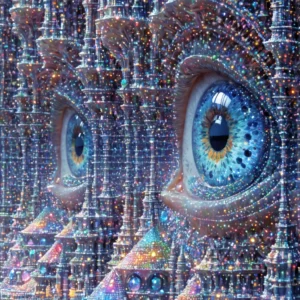
Introduction to Crystal Therapy’s Rising Popularity
In recent years, crystal therapy has captured the attention of a global audience. Many people embrace the idea that crystals not only possess aesthetic beauty but also carry unique energies capable of healing and balancing emotions. Celebrities such as Adele have showcased crystal therapy during performances and interviews, igniting curiosity among fans and inspiring many to delve into this unconventional practice. Consequently, enthusiasts enjoy discussing the benefits and symbolism of various gems. Moreover, communities around the world organize workshops and retreats, all of which contribute significantly to the trend’s rapid growth. Today, individuals often seek out crystal therapy as a complement to conventional wellness practices.
The Celebrity Influence and Media Impact
Firstly, celebrities consistently propel niche trends into the mainstream. Public figures incorporate crystal therapy into their daily routines and performances, which builds a natural bridge between mysticism and pop culture. For example, when a well-known singer highlights their use of crystals, millions of social media users become eager to learn more. Furthermore, interviews, Instagram posts, and YouTube videos reveal personal stories and testimonials that bolster public interest. Clearly, the media plays a powerful role in shaping beliefs as well as consumer behavior.
Additionally, some key factors have accelerated the trend:
- High-profile endorsements by celebrities.
- Engaging social media trends and visual storytelling.
- Increased search interest and online communities discussing methods.
These factors interact to produce a synergistic effect that spreads awareness across diverse audiences.
The Science, History, and Controversies of Crystal Therapy
Historically, numerous ancient cultures have perceived gemstones as imbued with magical or healing properties. During the Middle Ages and earlier epochs, many civilizations incorporated crystals in religious rituals and traditional medicine. Scholars now compare these practices with modern approaches to wellness. Although scientific evidence proving the tangible healing properties of crystals remains inconclusive, many practitioners report enhanced emotional stability and spiritual growth. Researchers continue to investigate the phenomenon while acknowledging that belief systems inherently affect outcomes.
At this point, one must consider the following aspects:
- Historical significance: Tracing back to ancient civilizations that revered crystals.
- Cultural integration: Understanding how modern practices link to historical traditions.
- Scientific inquiry: Evaluating the evidence that supports holistic benefits.
Moreover, practice debates persist regarding standardization, regulation, and the effectiveness of techniques. Therefore, careful research and personal judgment guide many individuals on this journey.
Modern Practices and the Role of Social Media
Today, digital platforms influence how trends evolve and spread. Numerous bloggers, vloggers, and wellness coaches share firsthand experiences with crystal therapy, including step-by-step guides on choosing and cleansing crystals. In this increasingly interconnected era, everyone can access information and opinions from professionals and amateurs alike. In addition, forums and comment sections serve as valuable repositories of shared tips, personal stories, and even scientific critiques.
To better understand the current landscape, the table below compares popular features of modern crystal therapy practices:
| Aspect | Description | Impact |
|---|---|---|
| Education | Online courses, webinars, and tutorials | Enhanced understanding among novices |
| Engagement | Social media challenges and interactive posts | Broadened community involvement |
| Endorsements | Celebrity and influencer testimonials | Increased mainstream appeal |
Subsequently, users take advantage of technological innovations that enable a more dynamic exploration of crystal therapy. Furthermore, digital surveys and online reviews provide valuable feedback that refines modern applications.
The Energetic and Healing Properties of Crystals
Crystal therapy enthusiasts believe that each crystal vibrates at a distinct frequency. They suggest that these unique frequencies interact with the human energy field, known as the aura. Although some scientists debate this concept, many practitioners passionately claim that properly chosen crystals can soothe stress, enhance meditation, and even balance chakras. Frequently, experts recommend specific crystals for particular purposes. For instance:
- Rose Quartz: Promotes emotional healing and self-love.
- Amethyst: Enhances intuition and aids sleep.
- Citrine: Stimulates creativity and abundance.
Moreover, crystal therapy sessions may involve meditation practices, crystal grids, or even ritual cleansings. Clearly, these elements produce a holistic experience aimed at harmonizing the mind, body, and spirit.
Navigating the Challenges and Ethical Considerations
As crystal therapy gains popularity, ethical and practical challenges naturally arise. Critics often question the efficacy of a practice lacking robust scientific validation. Conversely, many advocates argue that personal experience and subjective benefits justify its usage. In effect, ethical considerations involve:
- Respecting cultural traditions and ancient wisdom.
- Understanding the economic impact of commercialization.
- Acknowledging that individual results may vary when using crystals.
In addition, transparency and honesty matter greatly for professionals providing crystal therapy services. Therefore, many experts strive to educate their clients on realistic expectations. In parallel, practitioners combine traditional wisdom with modern wellness trends to foster a responsible approach, thereby improving credibility.
Looking Ahead: Trends and Future Directions
In the coming years, the interest in crystal therapy will likely intertwine with broader wellness movements. Observers predict that technological progress and scientific inquiry will open new avenues for researching crystal energies. Consequently, collaborative projects between scientists, historians, and practitioners will potentially shed light on ancient practices understood through modern lenses.
This trend also promises to inspire innovative health products and sustainable practices in our digital world. Furthermore, new educational programs will emerge online and offline, targeting a diverse audience without compromising traditional values. Hence, future advancements may help bridge the gap between scientific skepticism and spiritual belief.
Conclusion and Personal Reflections
Ultimately, crystal therapy commands attention because it intertwines aesthetics, spirituality, and ancient wisdom in a manner that appeals to modern lifestyles. With celebrities leading the charge and digital platforms amplifying its reach, this alternative healing practice grows stronger each day. Many individuals find solace and empowerment through their experiences with crystals, despite ongoing debates. Simultaneously, practical research and community feedback improve its methods, thereby forging a balanced narrative rooted in both tradition and innovation.
To conclude, crystal therapy exemplifies the dynamic evolution of wellness practices in contemporary society. Evidently, trend-setters and community influencers harness its potential while continuously challenging conventional norms. In short, the future of crystal therapy remains full of possibilities and intriguing adventures for those seeking holistic healing and personal growth.






